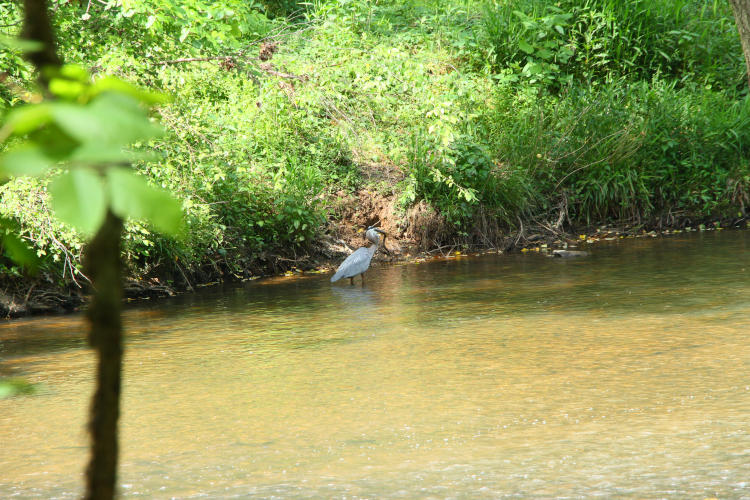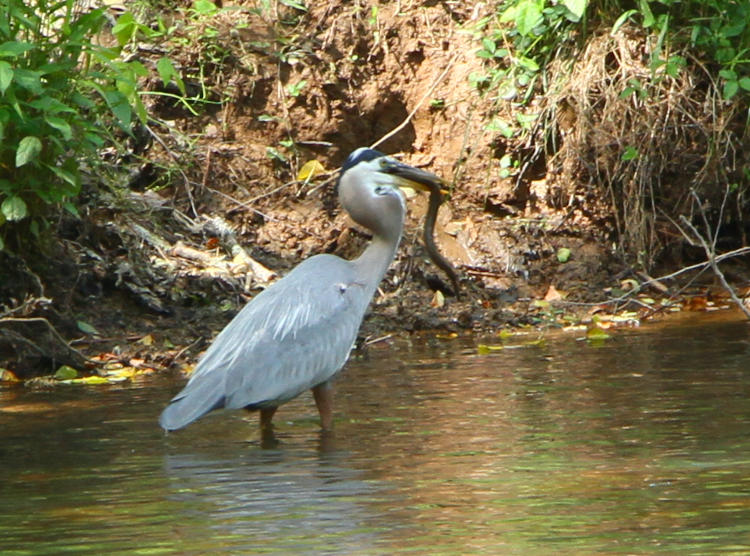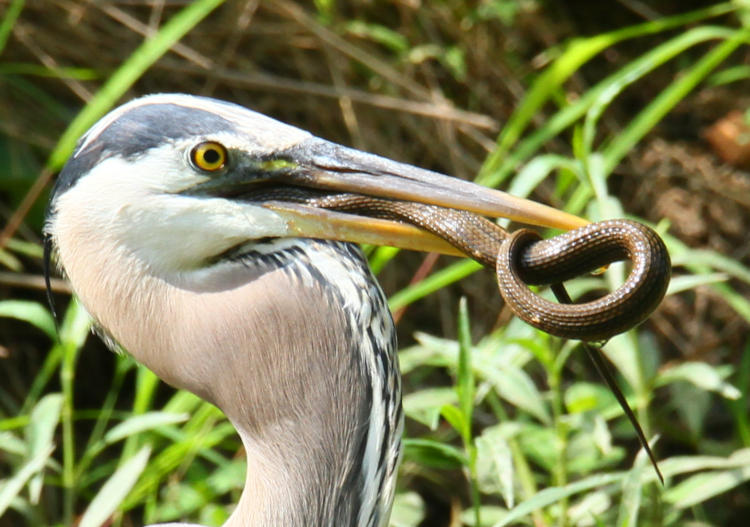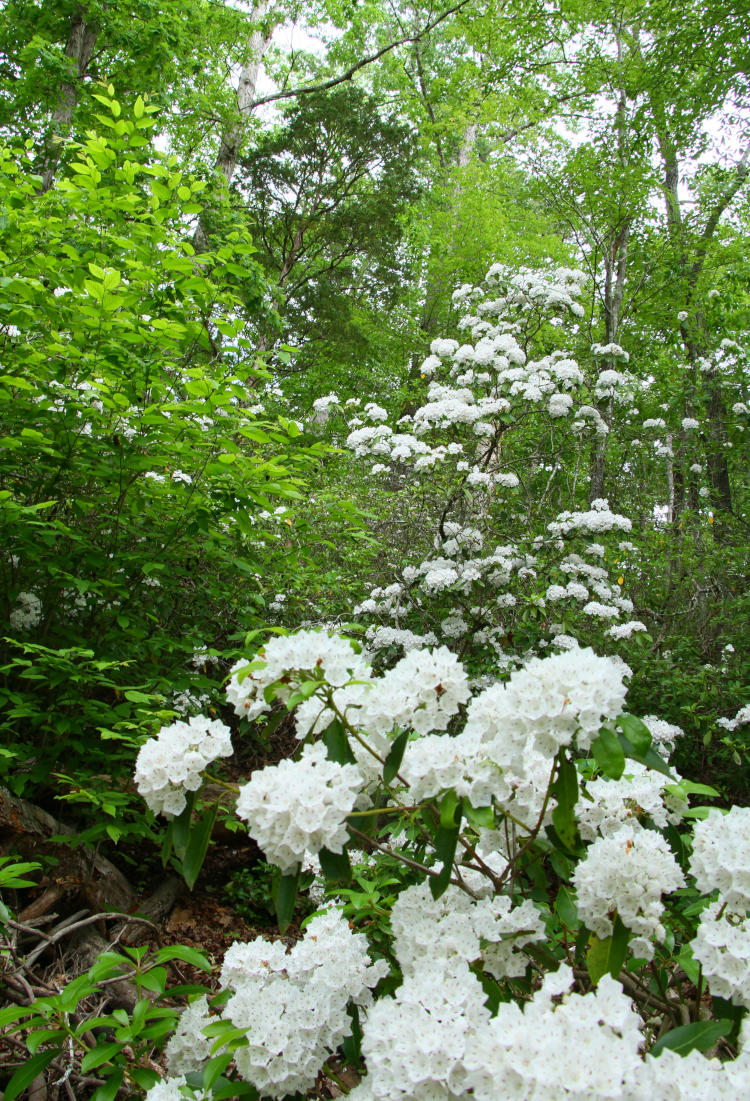I’m a little behind with this follow-up, but I have good reasons, plus I’m a grownup and don’t have to explain myself to the teacher anymore. Yet I did indeed get something at least semi-appropriate for World Migratory Bird Day, on that very day even, though I cut it kinda close. The outing that my brother and I made wasn’t aimed towards birds at all, and much of it was spent deep in forest canopy where, even when the birds did show, they were the little hyperactive species flitting around in poor light and I didn’t even bother trying, knowing the results would be dismal.
But then, close to when we were going to leave, my brother spotted the heron:

This is the initial frame at 135mm, because I had the shorter lens attached, and full-frame to give some idea of how little we could see. Motion, however, counts for a lot, allowing us to see more because of the shifting contrast with the background, so we can go in a little closer:

Now it becomes clear that the great blue heron (Ardea herodias herodias) has captured a snake, and I quickly switched to the long lens, hoping the heron wouldn’t gulp it down before I could get a few sharp frames. The heron, at least, was reasonably cooperative.

The snake, not so much. While headfirst down the gullet of the heron, perhaps by half its body length, the snake was very much alive because herons swallow their prey whole, and here it’s clutching at the breast plumes of its captor. Meanwhile, the heron was stalking slowly downriver (this being the Eno River) and I endeavored to maintain a decent view, or improve on it if I could. Ducking around some intervening trees and bushes on the banks, I got a nice perspective as the light improved, right before the heron took flight.

The autofocus wandered no small amount at the working distance, capturing the background from time to time, but a few frames were more than sharp enough, and this is one of the winners. It’s evident now that the snake is a red-bellied water snake (Nerodia erythrogaster,) which I don’t see too often and my brother has never seen. They average over a meter in length and 20-30mm in girth – nice little meal for the heron, and a good way to round out a relatively slow shooting day.
For the sake of it, and because I can’t make a post from the remainder, I’ll throw down a couple of other frames from the outing.

This is a white-spotted slimy salamander (Plethodon cylindraceus,) confirmed by the appearance, the habitat, and the fact that handling it immediately coated my hands with a fiercely sticky mucus that adhered to everything almost as bad as the plot device of a sixties sitcom. Moreover, we met with The Girlfriend’s Sprog just after this, and despite washing my hands thoroughly, they still displayed distinct brown stains that I showed to her – she recognized them instantly from her own experiences during her grad studies. The salamander was almost what we were out to discover, finding at least four, but none of the other species that we were actually hoping to find.
And a fartsy shot, because. The mountain laurel (Kalmia latifolia) was in full bloom so I fired off a few frames, not even getting a migratory bird in there. Then again, I got more than a few frames in the two previous days, and you’ll see them shortly as well.




















































